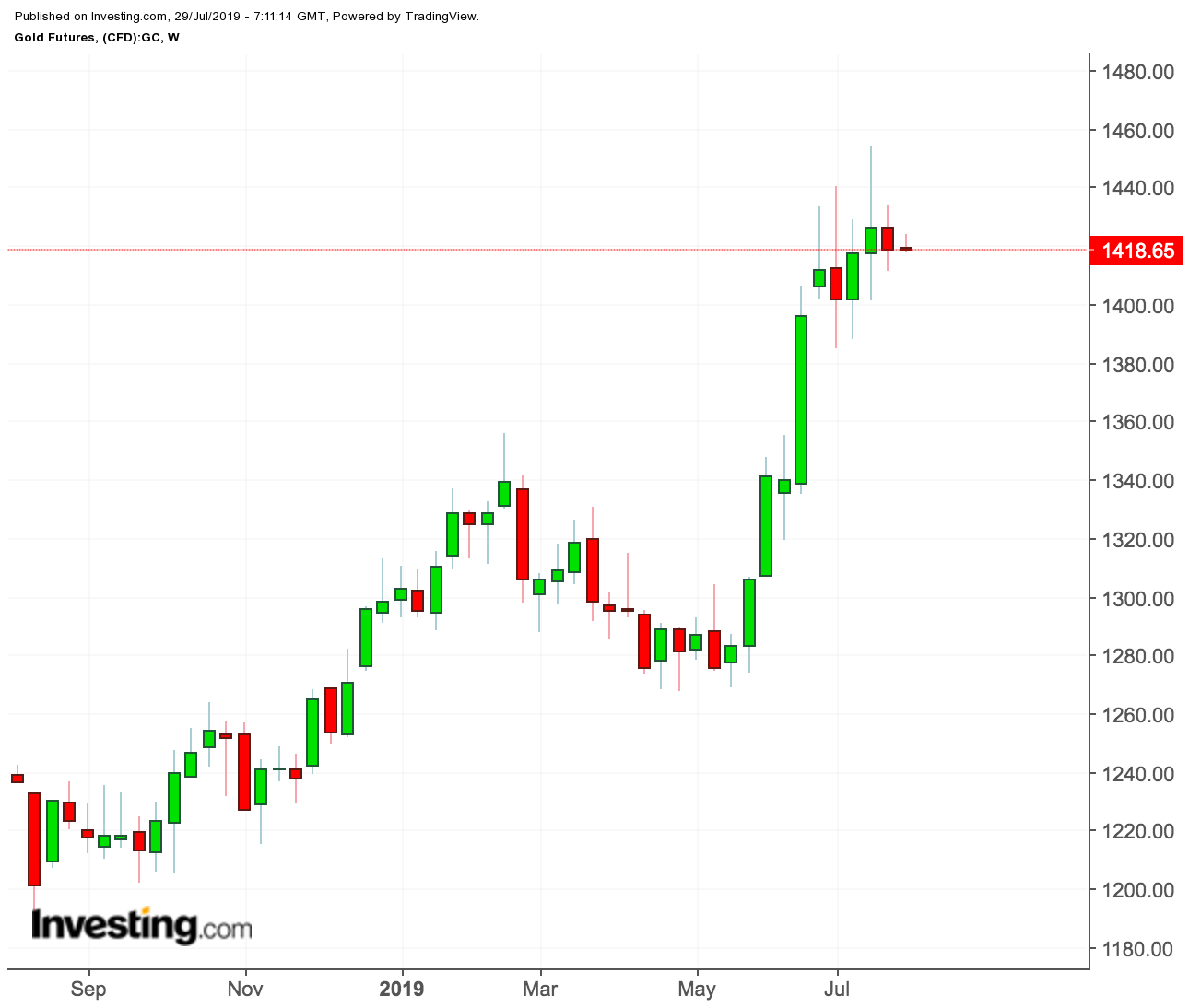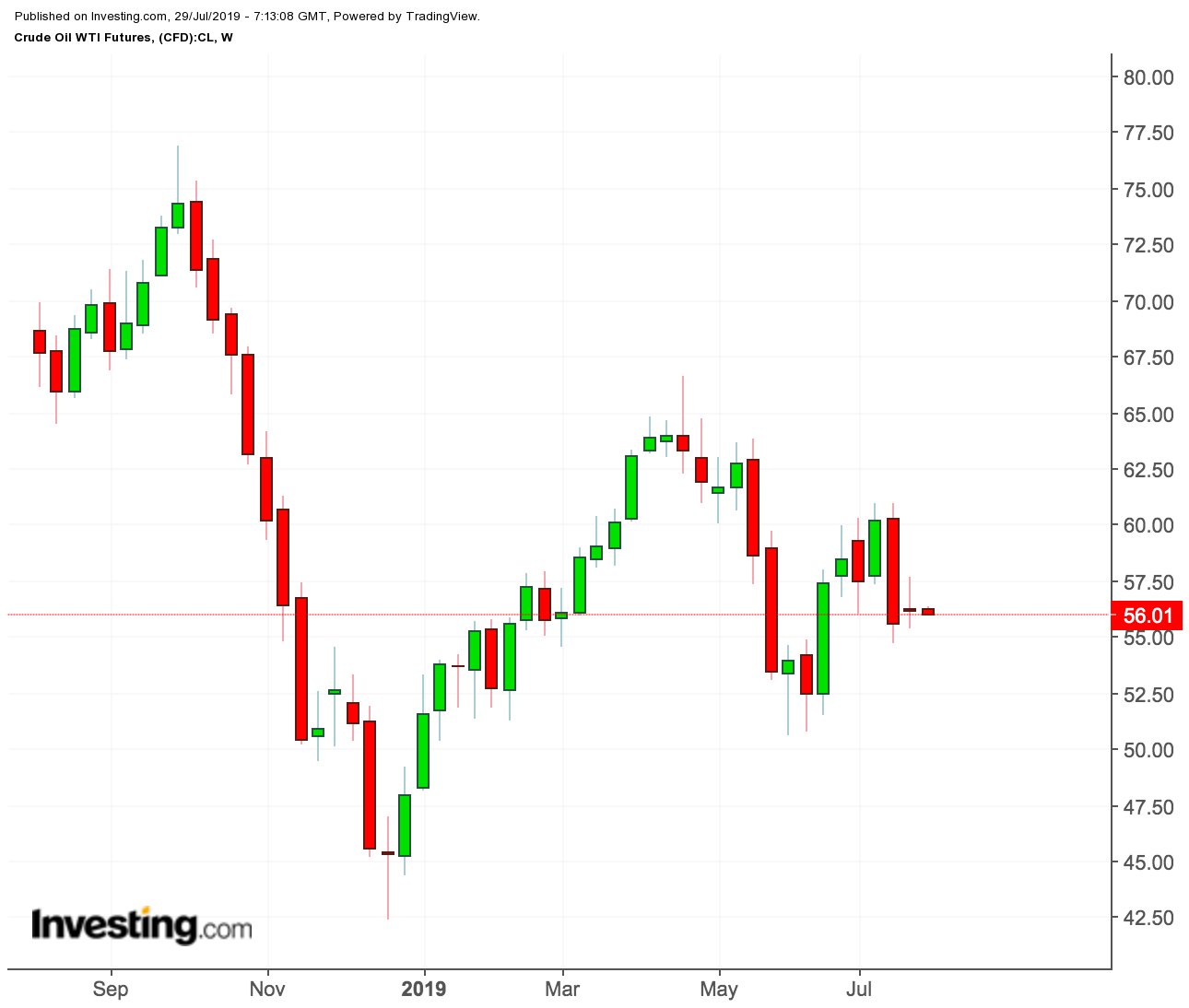Investing.com – The rate cut markets have long awaited may finally be here.
Yet, the more important question traders need an answer to is: what will happen after Wednesday, if the Federal Reserve goes ahead this week with its first monetary easing in a decade?
Expectations that the Fed will cut rates by at least 25 basis points at its July 30-31 policy meeting powered a solid run across markets this month, helping spot gold and U.S. gold futures hit six-year highs above $1,450 an ounce.

While U.S. West Texas Intermediate crude and U.K. Brent are headed for their second month of losses in three, both averted some of their worst downside in July on buying support linked to speculation over the rate cut.

Fed, BoJ, BoE All Have Rate Decisions
Apart from the Fed, the central banks of Japan and England also face interest rate decisions in the coming week. That aside, the U.S. jobs report for July, along with Chinese, U.S. and eurozone manufacturing PMI, among others, make for a data-heavy week that again pits concerns about the global economy against official response.
Markets have fully priced in expectations that the Fed will adopt a quarter percentage point reduction on July 31. But speculation has been fluctuating over a more aggressive half percent point cut.
But more important than what happens on Wednesday is what the market expects of the Fed in follow-through action in September and beyond.
Here’s where the real disappointment could be for gold longs, as the Fed might not be as dovish as many expect.
Will Fed Go Beyond One Cut?
Blackstone’s chief investment strategist, Joseph Zidle, is one of the few willing to bet against the herd that the Fed will not deliver on the multiple interest rate cuts expected in the coming months.
In a recent interview with CNBC, Zidle said:
“Inflation is not nearly as weak as the market expects. A lot of the cuts that the market demands from the Fed were based on these really weak inflation expectations.”
“Economic growth is slowing, but I think we’re going to avoid a recession for a long time.”
Dominick Chirichella, director of risk and trading at the Energy Management Institute in New York, also thinks the Fed will need to go beyond one cut to get markets really excited.
He added:
Since this level of a 0.25% cut seems to be already priced into the market, the reaction in the financial and commodity markets could turn out to be muted”.
Mixed Views On Q2 GDP Reading
Until Friday, there were still questions about whether a rate cut was likely in the coming week, as a better-than-expected GDP reading for the second quarter raised doubts about such easing. While gross domestic product growth expanded at a slower annualized rate of 2.1% in the second quarter, it was still higher than the forecast 1.8%, the U.S. Commerce Department reported.
Gold prices still rose at Friday’s settlement as the better-than-expected economic performance in the second quarter didn’t dissuade gold bulls who had built long positions in the yellow metal in anticipation of a rate cut. In fact, over the past two months, gold had accumulated a gain of over 11%.
Yet, that didn’t mean gold longs had no concerns about the Q2 GDP data.
Before Friday, markets had fully priced in expectations that the Fed will cut interest rates by 25 basis points on July 31, although speculation has been fluctuating over a more aggressive 50-bp cut. After the release of the GDP data, those odds fell to 19.4%, compared to 23.5% earlier.
That could be a red flag for traders hoping for a super-dovish Fed, Chirichella said.
He added:
“The U.S. consumer is still spending at a very high level, while inflation remains in check.”
Others argued that the Q2 GDP reading would not derail the Fed’s easing plans.
Art Hogan, chief market strategist at National Securities in New York, said: "This is just what the market needed, not so soft that the economy is slowing down precipitously and not so strong that the Fed is going to reverse course.”
